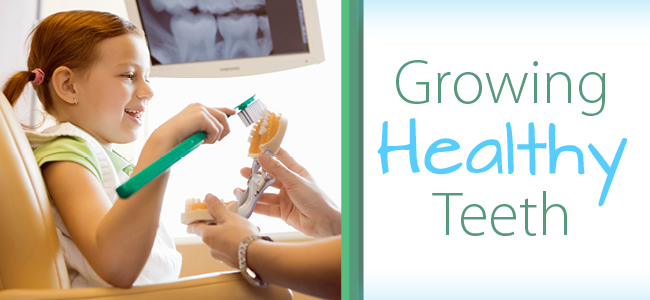Taking preventive measures to protect your teeth from decay is essential for maintaining your natural smile. While prevention includes maintaining good at-home oral hygiene practices and making it to your routine dental visits, there are additional steps you can take to help keep your teeth healthy, strong, and safeguarded against the harmful bacteria that leads to decay and cavities.
Some of the following preventive measures are commonly associated with protective treatments appropriate for children, but they can be just as beneficial for adult teeth. The next time you pop in for your regular exam, take some time to ask the doctor about whether they are right for you.
Sealants
Brushing and flossing cleans most of your teeth surfaces, but getting to all of the crevices — especially those located in the back molars and premolars — is difficult. Those tiny dips and pits are perfect for trapping food and bacteria, which often results in the formation of cavities.
Dental sealants provide a protective coating that keeps these areas free from food debris. They are made from a resin material that is used to coat the chewing surfaces of the back teeth. It is painted on and seals the nooks and crannies in the teeth, so that food and other plaque-causing materials that cause cavities are kept out.
The procedure for applying sealants is simple, painless, fast, and takes only one visit. First the decay is removed from your teeth, and they are thoroughly cleaned and dried. Next the sealant material is painted on the chewing surface. It will naturally bond to the tooth on its own; however, a special light may be used to speed the process, helping the sealant to harden in just a couple of minutes.
Fluoride Treatments
Fluoride is a naturally occurring mineral that can be found in both food and water. It aids in the prevention of tooth decay and cavities by making teeth resistant to the acids created by plaque and sugars. Fluoride is deposited on tooth enamel when you eat foods and beverages that contain it; it is lost when the acids produced by plaque and sugars eat away at the enamel of a tooth. Tooth decay occurs when the amount of fluoride lost outweighs what is being deposited.
Most often fluoride and its use in dental treatments is associated with children and the strengthening of their young, vulnerable teeth. Although fluoride is important for young children, it is also beneficial for adolescents and adults of all ages. In fact, new research indicates that fluoride’s role in fighting tooth decay as we age is just as important as its role in the strengthening and protection of newly developing teeth.
A fluoride treatment involves applying fluoride topically to teeth. The in-office fluoride treatment is quick and painless, and it involves applying fluoride in the form of varnish, gel, or foam directly onto the teeth. This can be accomplished by wearing a mouthguard filled with the foam or gel or by having varnish painted directly onto your teeth.
Hygiene Services
In addition to sealants and fluoride treatments, there are two important hygiene services that can improve your chances of avoiding decay, cavities, and tooth loss.
Periodontal treatment: This treatment prevents the progression of periodontal disease and returns teeth and gums to a healthy state.
Professional teeth cleanings: Having your teeth cleaned regularly helps prevent gingivitis, tooth decay, and loss of enamel from teeth. Some of the services included during your regular cleaning include:
- A review of your dental and medical history
- An oral cancer screening
- An evaluation of your overall oral health
- X-rays to detect decay
- Removal of stains, plaque, and tartar
- Polishing of all teeth
- At-home oral health education and instruction
Keeping your natural smile for a lifetime is possible when protective measures are taken and the proper dental care is received. Your oral health is our top priority, and making sure your teeth stay healthy and beautiful is our mission. Call us today to find out more about how we can help protect your smile against decay.
More

Few parents realize that their children are at risk for tooth decay from the moment the first tooth appears (around 6 months). Even though baby teeth are temporary, they are important; they serve as placeholders for adult teeth, and if they are lost too early, their adult replacements may grow in too early and affect the position of permanent teeth that come in later. Tooth decay and damage can also lead to issues with speech development that require therapy for correction later in life.
Pediatric dental disease is the number-one chronic childhood illness, and it continues to plague children throughout the course of their development and into their adult years — but it doesn’t have to. Teaching children good dental habits at an early age and making sure they attend routine dental visits goes a long way toward helping them maintain a pain-free, healthy, and beautiful smile for a lifetime.
The following information functions as a road map for understanding your children’s oral development and health throughout their ages and stages.
Birth to 1 Year
You should be caring for your baby’s teeth before they even appear. Infant toothbrushes come in a variety of sizes and shapes. Most are made out of a soft BPA-, lead- and phthalate-free silicone and have tiny bristles parents can use to gently brush gums after each feeding. Once your baby is old enough to sit and hold objects, there are similar brushes that resemble teething rings, which babies can hold and massage their own gums with.
Your child should have his or her first dental exam by the time they are 1 year old.
When Baby’s First Tooth Appears
As soon as baby’s first tooth appears, you should begin brushing with the infant toothbrush and water twice a day. Sugars are detrimental to teeth, and too much can quickly lead to tooth decay. Try to limit your child’s juice intake to one cup a day. Also, be aware of your child’s sucking behaviors and habits. If your baby sucks his or her thumb, finger, or pacifier, now is a good time to start planning out how you will break the habit. Regular sucking can negatively affect your child’s bite.
Your pediatrician will inspect your child’s teeth at each well-child exam and will refer you to a dentist should any concerns arise. You should consult with your pediatrician about fluoride, sealants, and additional ways you can support your child in the development of excellent oral hygiene habits.
2 Years
By the time your child is 2 and a half, they should have all of their baby teeth. At the age of 2, your child is ready to start learning how to brush their own teeth two times a day. Soft-bristled, child-size toothbrushes are available and make reaching difficult spots easier for uncoordinated little hands. At this age, your child can use a pea-size amount of toothpaste with fluoride. Allow them to brush their own teeth for a couple of minutes, then finish by taking the brush and making sure every tooth has been gently scrubbed. Once you are finished, have your child spit the remaining toothpaste into the sink.
Tips for Avoiding Toddler Tooth Decay
- Avoid sugary snacks and drinks.
- If your child needs milk or formula before bedtime, make sure to rinse their mouth out prior to laying them down.
- If your child requires a bottle at bedtime, fill it with water.
6 Years and Beyond
Your child will start losing their primary teeth around 6 years. They will continue to lose primary teeth and gain most of their permanent teeth until around the age of 13, when they should have 28 permanent teeth. If there is enough room, their final teeth — the wisdom teeth — will erupt around the age of 17. If your child’s dentist believes room is limited, he or she may recommend that the wisdom teeth be removed.
A variety of dental issues may arise throughout the course of your child’s development. Regular dental visits will ensure that they are caught and dealt with early. Children no longer have to wait until they are adolescents to have their first orthodontist visit. Issues requiring orthodontics can be attended to starting as early as 6 years old. This doesn’t mean treatment will be started right away, but the orthodontist will be able to determine the earliest possible time treatment can begin.
Orthodontia has come a long way, and treatments don’t have to take place late in life, nor do they take as long. With the right oral hygiene habits and the proper dental care, your child can have a beautiful, healthy smile well before they walk down the graduation aisle.
For more information about how to care for your children’s teeth as they grow, call us today. We are here to ensure that your most precious family members enjoy a lifetime of beautiful, healthy, and happy smiles.
More
By admin
11 Nov, 2015
Dental Discomfort, Dental Tips, General Dentistry, Lifestyle, Preventive Dental Care
brushing, enamel, fluoride, gum disease, sensitive teeth, teeth grinding, teeth whitening, tooth decay, tooth sensitivity

A breath of crisp winter air, a sip of hot cocoa, a bite out of a sweet candy cane — all of these have two things in common: They remind us of the rapidly approaching holiday season, and though less pleasant, each can also trigger the sharp, unexpected pain associated with tooth sensitivity.
What Is Tooth Sensitivity?
Tooth sensitivity is experienced as a sharp, sudden pain that is felt in the tooth and gum areas. It occurs when gum and enamel loss expose the sensitive surface of the teeth that lie beneath, called dentin. Dentin is less dense than enamel and contains thousands of tubes that lead to the tooth’s nerve center, called the pulp. Once the protective cover is lost, heat, cold, and sweet and acidic foods can reach the nerves inside the tooth through the tubes, eliciting a pain response. Fortunately, once the cause of tooth sensitivity is identified, there are options for treating it and restoring optimal oral comfort.
Causes of Tooth Sensitivity
Some of the things that lead to tooth sensitivity include:
- Overbrushing, brushing too hard, or brushing with a hard-bristle toothbrush
- Grinding and clenching teeth
- Tooth decay located near the gumline
- Plaque buildup
- Tooth-whitening products
- Gum disease
- Fractured tooth
- Dental work
Preventing Tooth Sensitivity
The key to preventing tooth sensitivity is maintaining good oral-hygiene practices. Brushing twice a day, flossing once a day, and rinsing regularly will go a long way toward keeping your gums and teeth healthy and strong. The following are additional steps you can take for reducing tooth sensitivity:
- Always use a soft-bristled toothbrush and brush gently
- Avoid foods and beverages that are acidic
- If you grind your teeth, talk to your dentist about getting a mouth guard to wear when you sleep
- Brush with toothpaste for sensitive teeth
- Keep your enamel strong by using products with fluoride
Treating Tooth Sensitivity
The manner in which tooth sensitivity is treated largely depends on the condition that led to it or the situation that is causing it. If sensitivity is resulting from a cavity or a chip in a tooth, a restoration can be placed to fix it. However, if sensitivity results from exposed dentin, there are treatments designed to reduce the discomfort.
- Fluoride varnish can be applied to the vulnerable, exposed areas of your teeth.
- A mouth tray with a high concentration of fluoride in the form of foam can be placed in your mouth for five minutes. This treatment strengthens weak areas.
- The bonding agent used to adhere restorations to teeth can be used to put a protective seal over the surface of the dentin.
- Gum tissue can be moved from one area of the mouth to an area where tissue has been lost from the root with a gum graft.
If you think you might be suffering from gum sensitivity, call us today at (661) 952-7865 to set up an appointment and find out more about what you can do to restore your oral comfort before the holidays hit.
More



